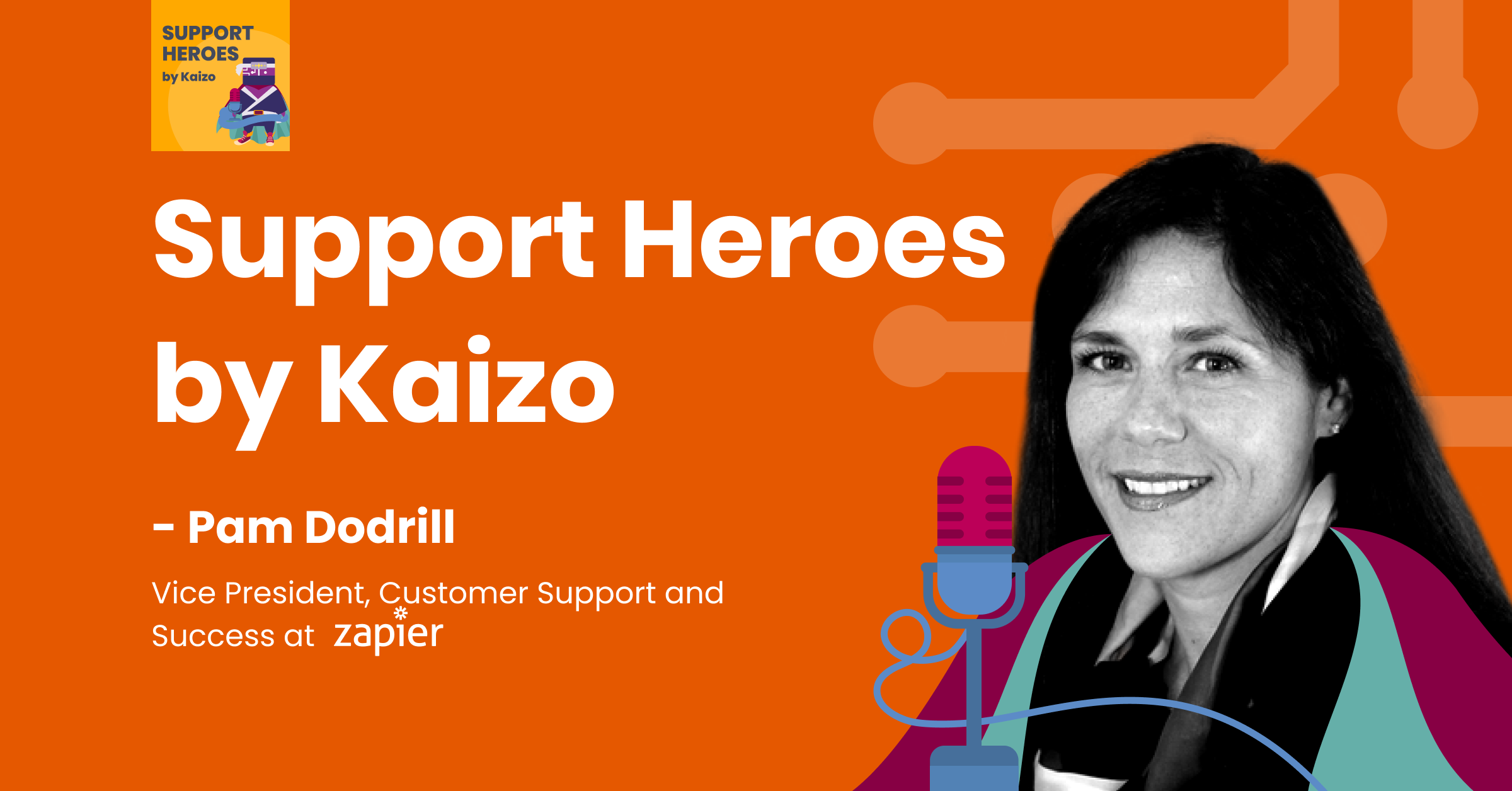Click ‘subscribe’ in the bottom right of the player to listen or download from Apple Podcast, Spotify, Google Podcast, and Amazon Music.
The nineteenth episode of Support Heroes by Kaizo featured Pam Dodrill- Vice President of Customer Support and Success at Zapier.
In this episode, Pam shares top tier strategies developed from decades of support management, now applied in one of the world’s leading SaaS companies. Pam elaborates on many facets of support strategy, contrasting common practices to those she and Zapier believe to be optimal.
Defining value for support through value for the business
“We’re not just here to answer the requests, we’re here to make sure [customers] are realising the outcomes they want and having success”
- Deciding how to measure the value and performance of support is not as simple as it sounds. There are many metrics the industry uses as a measure of value/benefit that can be tracked against a unit of cost to represent the efficiency of support.
- During a roundtable at one of Zapier’s company retreats, a colleague of Pam’s noted: “I don’t want to be measured on my replies per hour…I want to know after I interact with a customer that their Zap [a workplace application for Zapier] is working 30 days later”. This represents the marriage of Zapier’s customer support and success strategy- seeing support’s success not through its own metrics but through the value that the product provides to the customer: the value of each Zap.
- As such, Pam’s department has been focused on capturing data regarding the application of Zaps from support tickets 7, 14 & 28 days after contact with support. With this data, Pam and her team are now being able to benchmark these interactions and develop decision science to push them further.
Value at a current price point first; upsell second
“For every 10 times we interact with a customer, at most one of those things should be about signing a contract, an upgrade, or buying something new.”
- One of the common pitfalls related to making support a revenue engine is driving upselling at the cost of service and customer experience.
- ‘I don’t want to buy something right now, I have a problem that needs fixing’ perfectly encapsulates the issue with pushing upselling where it isn’t appropriate.
- According to Pam, the keys to upselling correctly are tone and timing. The tone should be supportive, helpful and not at all forceful. The timing should come after a customer is satisfied with the solution or service provided.
“When I’ve provided an ‘ah ha’ moment to [the customer] or [they’re] happy because we’ve fixed something, now may be a good time [for a recommendation or upsell].”
- Think of it as the cherry on top. An ‘oh by the way’ tacked onto the end of a successful interaction and more importantly, be fully ready to not recommend anything when the tone and timing aren’t right.
Not fighting for maximum utilisation time, utilising time to the maximum
- Queue time is something every support division is trying to optimise. However, like most things in support, if you focus too much on one metric it can do more harm than good.
- This is especially true in Zapier’s case as not only are Pam’s agents dealing with the everyday emotional strain of providing high-quality support but they’re doing so in an extremely technical field- servicing APIs for over 3000 applications.
- As such, Pam embraces that her department will have a lower utilisation rate than average. It comes with the territory. Instead, she turns this into a strength by allowing support staff to put that time to good use.
“I believe if you allow people to spend some time outside of the queue contributing to their career development and the betterment of the organisation, you win.”
- Support staff at Zapier who are active in the queue spend around 35% of their time assisting operations, documentation, training teams and more on a self-selected basis.
- Rather than fighting the state of affairs and driving active queue-time at the detriment of employee morale. The department turned this to their advantage: giving operations, documentation and training teams access to more man-power and giving those active in the queue a welcome break.


